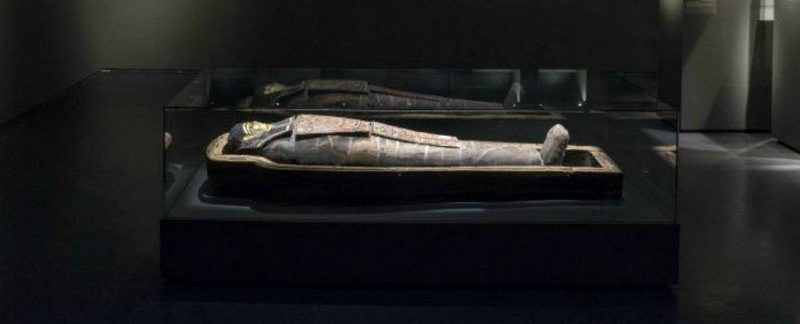If you have ever had a root canal done or had extreme tooth decay, you know there is no pain that can really compare. A 2,200-year old mummy has been put on display, which was stricken by what we think of as modern illnesses – tooth decay and osteoporosis.
The sicknesses, found using a CT scan, show that during his lifetime the man evaded manual work in the sun in favor of concentrating on his spiritual safety, and in taking carb-heavy snacks.
The mummy is an artifact in Israel named the “Protective Eye of Horus” after the Egyptian god. Horus is one of the most momentous deities in ancient Egyptian faith, being the god of the sky and of warfare, and was portrayed as a falcon or male who had a falcon head. It was kept for many years at a Jesuit institute in Jerusalem before it was sent to the Israel Museum.
Experts earlier studied 3,000 ancient Egyptian mummies to find almost one in five had worn fake teeth and suffered from periodontal diseases, abscesses, and cavities. The proliferation of tooth deterioration may have been caused by the ancient Egyptians’ food regime of bread and honey as well as other sugary baked treats.
The investigation on the mummy agrees with earlier studies that had shown people in ancient Egyptian periods suffered from some modern diseases.
Osteoporosis is an ailment that is typical of the 20th century, when people don’t work so physically. The museum stated that because of Egyptian embalming processes and Jerusalem’s dry climate, the mummy’s bones, teeth, and fragments of blood vessels were found generally intact, providing a tremendous amount of medical detail.
The mummy was also discovered to have had tooth cavities, which most likely were caused by an indulgence of sweet foods, prevalent for the ancient Egyptians. Investigators studied the mummy’s remnants earlier this year using a CT scanner, permitting them to discover the diseases and decide that the mummy was a man who lived in what was at the time was considered a relativity old age – between 30 and 40 years.
He was five foot six inches tall, but either through his lifetime or death had shriveled to a more diminutive five foot one. His sedentary routine, as well as engravings on his coffin, indicate he was a priest, the museum stated. It’s thought the mummy is first from Akhmim, 300 miles south of Cairo. The mummy, dubbed “Alex”, was covered in a gold and black sarcophagus and wrapped in threads of linen, with a gold mask positioned atop its cloaked skull. Alex was not the primary mummy to be discovered to have had suffered from tooth decay.
Archaeologists used the classic approach by using CT scanning.
After 85 CT scans of the mummies, it was found that only about 6% of the mummies had disorders that include osteoarthritis, and four of these cases had the disease that hardens arteries, called atherosclerosis.
Ten mummies were found with tumors; seven mummies showed side effects of malaria. A large portion of mummies even showed traces of infection-based diseases including gangrene and tuberculosis of the gums and teeth.
